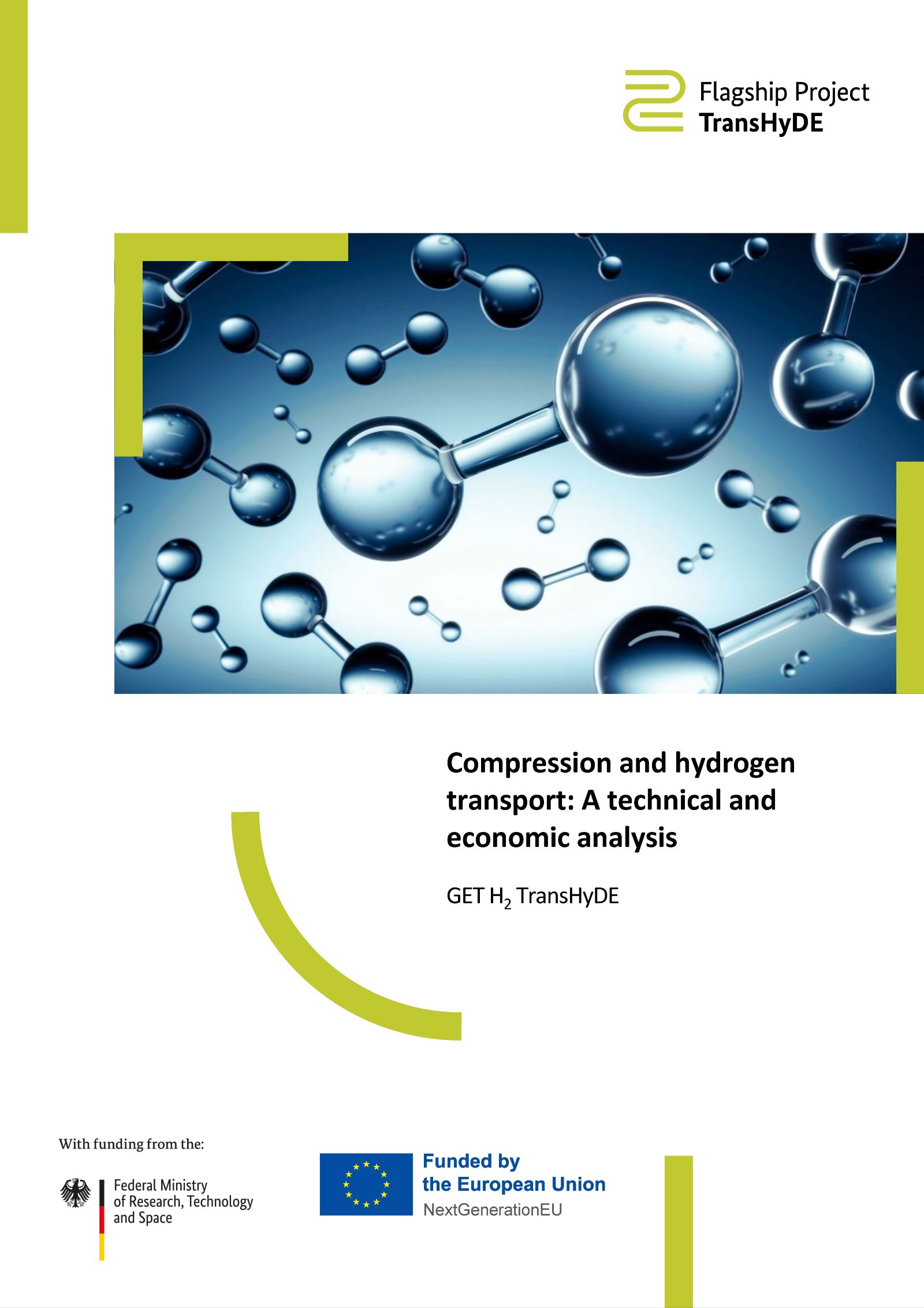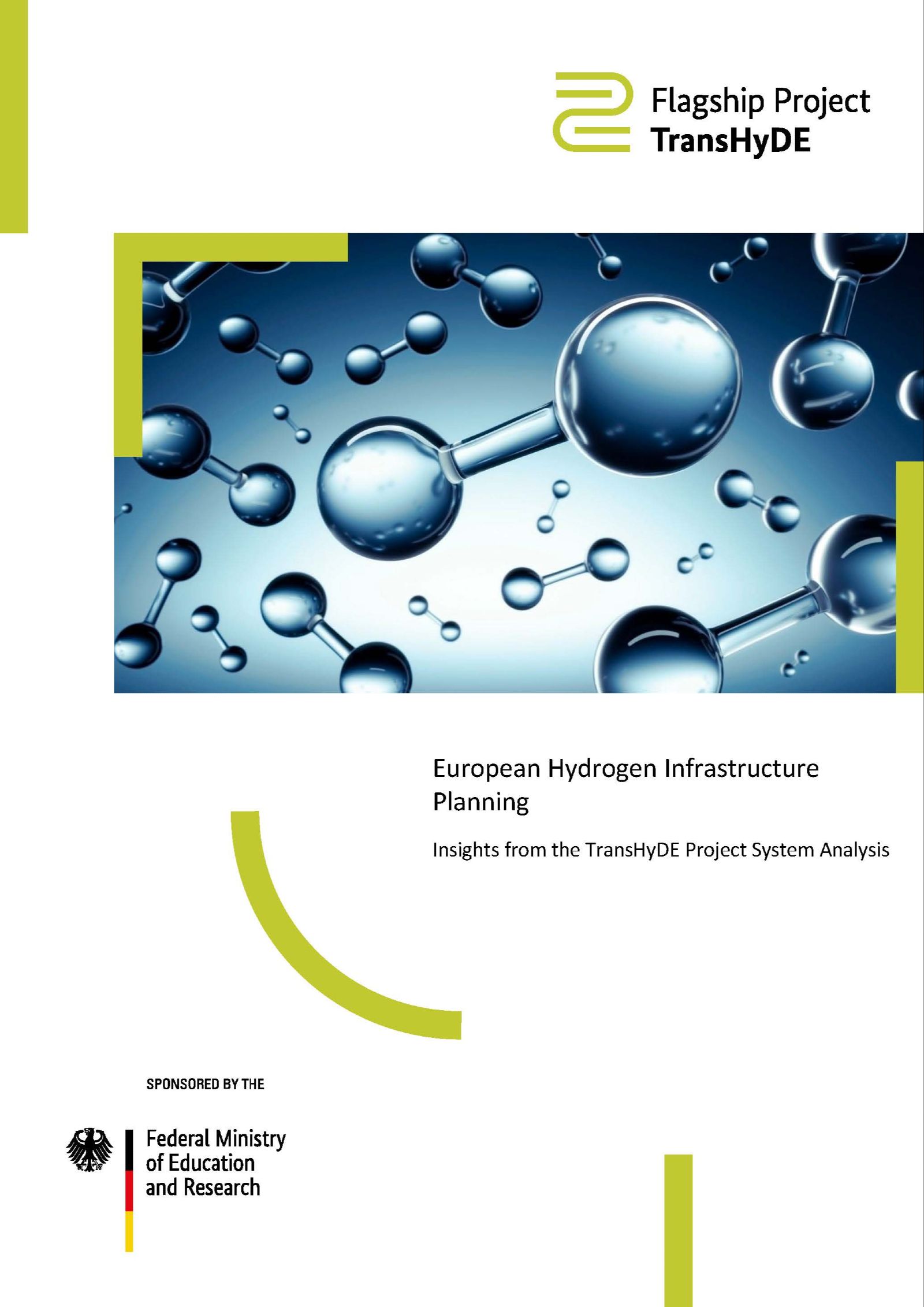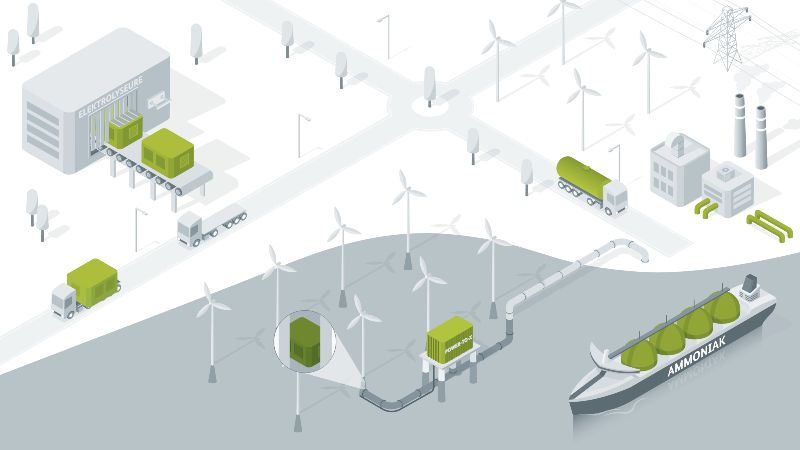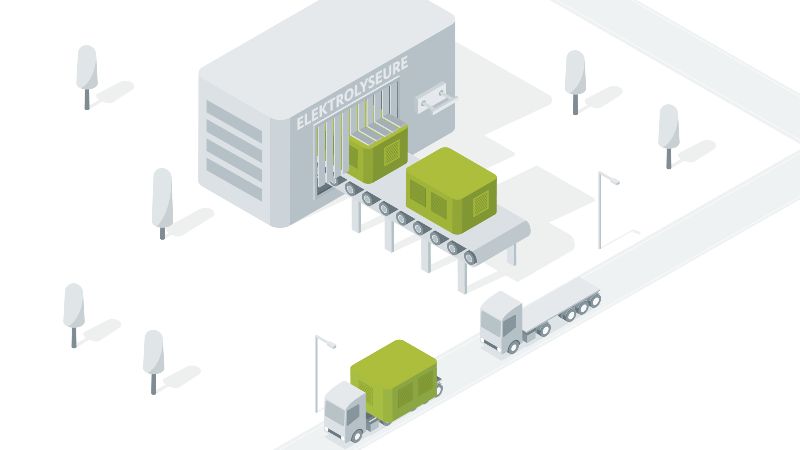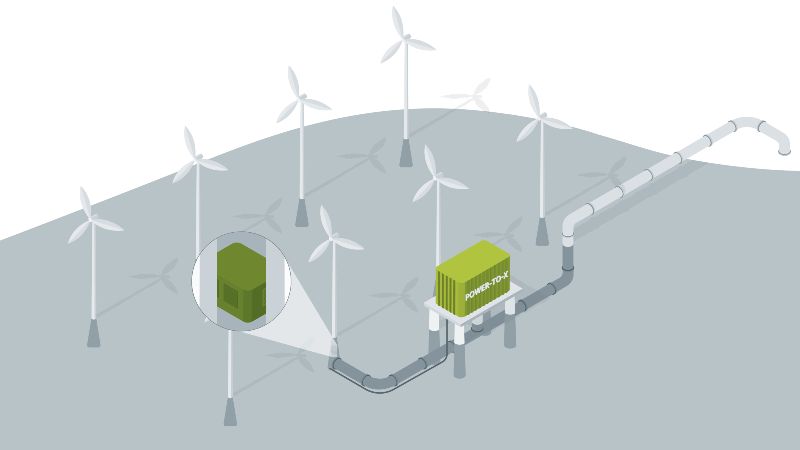TransHyDE
How TransHyDE aims to develop a hydrogen infrastructure
Only a suitable transport infrastructure can ensure a successful hydrogen economy. Import, local distribution, and storage require different approaches. TransHyDE is further developing and testing technologies for the transport and storage of hydrogen. The ultimate aim is to find the right technology for each application.
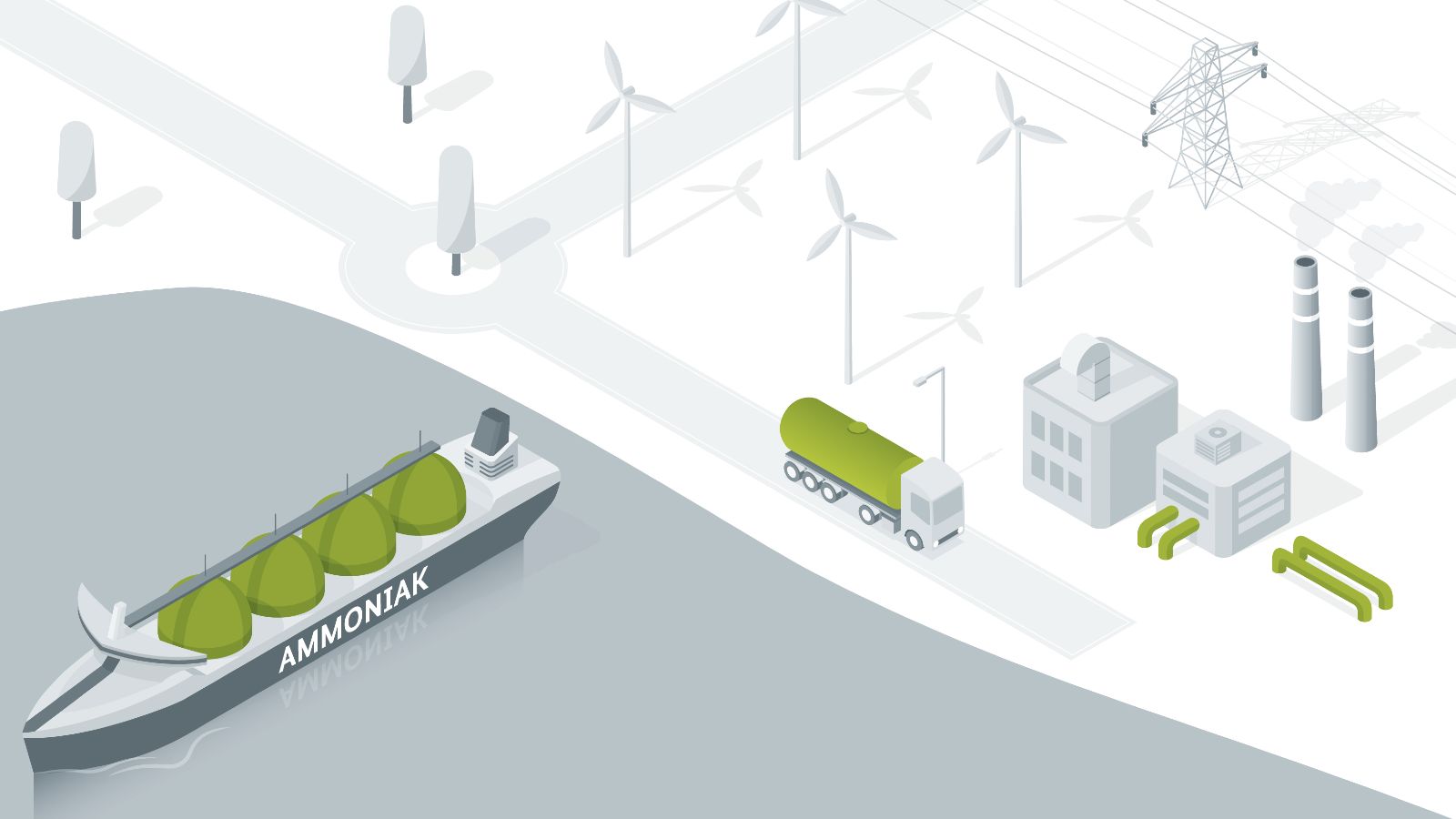
The TransHyDE projects are focusing on the transport of gaseous hydrogen in pipelines and high-pressure containers, the transport of liquid hydrogen, and the transport of hydrogen chemically bound in ammonia or LOHC. TransHyDE is also investigating whether and how LNG terminals could be adapted to manage the transport of hydrogen-based fuels. The findings of all TransHyDE projects will lead to recommendations for the national hydrogen infrastructure. To this end, overarching regulatory framework conditions, standards, and certification options will be analysed and gaps identified.
Gaseous hydrogen transport
In future, green hydrogen could be transported in gaseous form – by pipeline or in high-pressure containers. At a test site, the TransHyDE project GET H2 is therefore researching how existing natural gas pipelines can be converted. At the same time, the project is developing suitable materials for new hydrogen pipelines. High-pressure storage facilities might be an appropriate intermediate storage and decentralized transport option (e.g. spherical storage tanks such as those developed in the TransHyDE project Mukran).
To ensure that pipelines can be used safely and leaks can be detected at an early stage, the TransHyDE project Sichere Infrastruktur (safe infrastructure) is focusing on gas sensor technology methods. Using a high-pressure test rig and a pipeline test network, the insights obtained are tested under field conditions.
The project considers the entire transport chain for gaseous hydrogen via pipeline, ranging from the feed-in process – incl. compressor system – to the step where the hydrogen is fed out into downstream networks, hydrogen filling stations, and industrial consumption systems. The TransHyDE project GET H2 is focusing on former natural gas pipelines and their suitability for hydrogen. In addition to processes for determining quality and quantity, the project at the Lingen power plant site is also focusing on methods for regularly inspecting the pipelines. To this end, processes for cleaning and inspecting hydrogen pipelines will be developed, as well as a remote system for detecting hydrogen leaks.
Full title: GET H2 TransHyDE – Infrastrukturelle und betriebstechnische Aspekte bei der Umstellung von Erdgastransportleitungen auf Wasserstoffbetrieb und beim Neubau von Wasserstoffnetzen
Funding reference no: 03HY207A-J
Total funding amount: 11,63 Mio. €
Partners: 10
Project duration: 01.04.2021–31.03.2025
The TransHyDE project Mukran demonstrates the entire process chain for the development and transport of high-pressure containers. To this end, the project is developing two types of innovative spherical storage tanks. One of them is made of various steel alloys, the other has a steel interior and a load-bearing outer shell made of carbon fibre-reinforced plastic. The spherical shape is designed to reduce the load on the outer shell compared to the conventional cylindrical shape. As an example, the researchers demonstrate the transport of the two prototypes by truck. In future, it may also be possible to transport the high-pressure containers by ship or train. The project will also explore the best option for each application.
Full title: Erforschung innovativer Speicher- und Transportlösungen [Mukran]
Funding reference no: 03HY206A-I
Total funding amount: 18,87 Mio. Euro
Partners: 6
Project duration: 04/2021–09/2026
In order to establish a safe and durable hydrogen infrastructure, pipelines, storage systems, and connection points must be suitable for hydrogen in the long term. The TransHyDE project “Sichere Infrastruktur” (safe infrastructure) is therefore evaluating various materials in terms of their safety and lifetime. It is also developing sensors and systems to reliably detect possible gas leaks or trace gases in the hydrogen. In order to test the safe distribution of hydrogen in practice, the project partners are also converting a natural gas distribution network in Bavaria to hydrogen. The project findings will be used to develop guidelines and a roadmap for converting the infrastructure.
Full title: Verbundvorhaben TransHyDE_FP2: Sichere Infrastruktur
Funding reference no: 03HY202A-G
Total funding amount: ca. 10,4 Mio. €
Partners: 8
Project duration: 04/2021–03/2025
Liquid hydrogen transport
One litre of liquid hydrogen (at -252.9 °C) contains around 800 times more energy than one litre of gaseous hydrogen (at room temperature). This is why hydrogen is already being liquefied today for transport and storage, for example for hydrogen filling stations. In a future hydrogen network, large liquid hydrogen storage systems can therefore also be used to compensate for fluctuations in demand. The liquefaction of hydrogen and the storage of liquid hydrogen are state-of-the-art methods. There is, however, still a need for further research, for example with regard to increases in efficiency, the scalability of the systems, and positive interactions with the wider energy system. This is where the TransHyDE project AppLHy! comes in. It is investigating, for example, how the coldness of liquid hydrogen could be used for industrial purposes or for efficient electricity transmission
The TransHyDE project AppLHy! approaches the transport, storage, and use of liquid hydrogen (LH₂) from a holistic point of view. This includes the demonstration of an effective LH2 pump and a low-loss storage system as well as the identification of future requirements and potential applications for liquid hydrogen. The project partners are also looking at the interactions associated with transporting liquid hydrogen. To this end, they are demonstrating and evaluating the combined transport of liquid hydrogen and electrical energy in high-temperature superconductors as well as the subsequent use of cooling power in existing refrigeration systems.
Full title: Verbundvorhaben TransHyDE_FP4: Transport und Anwendung von flüssigem Wasserstoff
Funding reference no: 03HY204A-H
Total funding amount: ca. 15,2 Mio. €
Partners: 8
Project duration: 04/2021–03/2025
Transport of chemically bound hydrogen
Another way of transporting hydrogen, which is particularly favoured over long distances, is to bind it to other molecules. This results in compounds that can be transported more easily. For most applications, however, the hydrogen must be released from the compounds again after transport so that it can be used. In TransHyDE, two options for this type of hydrogen transport are analysed in more detail: ammonia and LOHC.
Ammonia is a nitrogen–hydrogen compound that is used in large quantities in agriculture and industry. There is therefore a lot of experience in dealing with this chemical. In TransHyDE, two projects are addressing issues relating to the use of ammonia as an energy carrier. Unresolved issues that the TransHyDE project AmmoRef is tackling primarily relate to the efficient and cost-effective extraction of hydrogen from ammonia. In line with this, the TransHyDE project CAMPFIREaims to demonstrate the entire transport chain using green ammonia. This involves ship-to-ship refuelling, for example.
Hydrogen can be recovered from ammonia using a high-pressure or low-pressure process. The TransHyDE project AmmoRef aims to optimize both ways of reforming and make them feasible on an industrial scale. The project partners are testing an adapted management solution for the two processes on a pilot-plant scale. New catalysts developed by the project partners will also be used. They are designed to be highly active and ensure stable processes. To reduce costs and protect the environment, their proportion of noble metals will be reduced as much as possible. The catalysts developed will be passed on to the TransHyDE project CAMPFIRE, where they will be tested on a larger scale.
Full title: Verbundvorhaben TransHyDE_FP3: Reformierung von Ammoniak – Transport von H2 über Derivate
Funding reference no:03HY203A-F
Total funding amount: ca. 12,5 Mio. €
Partners: 7
Project duration: 04/2021–03/2025
In Poppendorf near Rostock, the TransHyDE project CAMPFIRE is demonstrating the entire transport chain for hydrogen based on green ammonia. Technologies are being developed for the transport of liquid ammonia (cryogenically liquefied or liquefied under pressure) by ship as well as ship refuelling using ammonia. Another focus is the use of ammonia–hydrogen mixtures in engines for ship- and shore-based energy supply. The project is developing catalysts and reactors for flexible ammonia production in the event of a short-term surplus of renewable energy. Ammonia could thus be used to store surplus energy.
Full title: Umsetzungsprojekt CAMPFIRE – Ammoniak als Transportlösung für Grünen Wasserstoff
Funding reference no: 03HY209A-Z
Total funding amount: 30,6 Mio. €
Partners: 19
Project duration: 04/2021–03/2025
LOHC is a liquid organic carrier that can chemically bind hydrogen and release it again, referred to as hydrogenation and dehydrogenation. It is another promising option for hydrogen transport over long distances. The TransHyDE project Helgoland is therefore researching the entire transport chain – from the bonding of hydrogen to LOHC through to its separation.
The TransHyDE project Helgoland is researching and developing a model transport chain based on the LOHC benzyl toluene between Helgoland and the port of Hamburg. In this project, the German island is being considered as the location for hydrogen storage (hydrogenation) and Hamburg, the port of destination, as the location for hydrogen release (dehydrogenation). The researchers are also investigating how the waste heat from the hydrogenation process could be used to supply the island with heat. Aspects related to materials and safety during transport as well as classification and standardization issues also play an important role in the partners’ efforts. The aim is to develop a blueprint that will enable an LOHC-based hydrogen transport chain to be set up at similar locations around the world.
Full title: Umsetzungsvorhaben Helgoland
Funding reference no: 03HY208 A-J
Total funding amount: 13,8 Mio. €
Partners: 9
Project duration: 04/2021–05/2025
Framework conditions for the storage and transport of hydrogen
Many of the technologies for transporting hydrogen are not yet fully developed and are currently being implemented on an experimental or small-scale basis. It is also unclear whether import infrastructures, such as the planned LNG terminals, can be used for hydrogen-based energy carriers in the future. What is certain, however, is that suitable framework conditions are required for any form of storage and transport of hydrogen, ammonia, LOHC, and other hydrogen-based energy carriers. TransHyDE is therefore analysing the systemic framework and identifying organizational requirements. The findings of all TransHyDE projects result in recommendations for action. They include, for example, the need to adapt standards, norms, and certification options for hydrogen storage and transport technologies.
The LNG terminals being built in Germany are geared towards receiving natural gas from various importing countries. The TransHyDE project LNG2Hydrogen is investigating the potential conversion of terminals to handle the import of hydrogen-based energy carriers. These include, for example, ammonia, LOHC, and SNG. The current situation is analysed and the necessary technical and legal adjustments are outlined. The project is also focusing on the criteria and planning measures for new terminal infrastructures. The partners are also considering the further transport within Germany and analysing any technical and logistical challenges. Finally, the individual options are evaluated and analysed from an economic perspective.
Full title: TransHyDE – LNG-Terminals
Funding reference no: 03HY210 A-P
Total funding amount: ca. 3,8 Mio. €
Partners: 18
Project duration: 06/2023–11/2024
The TransHyDE project Norm aims to identify gaps in the existing regulations, standards, and technical certification programmes, and to develop approaches to address these issues. The project partners are cooperating closely with the other TransHyDE projects. This ensures that the requirements of the newly developed technologies are also taken into account in the standardization framework.
Full title: Verbundvorhaben TransHyDE_FP5: Standardisierung, Normung und Zertifizierung
Funding reference no: 03HY205A-I
Total funding amount: ca. 2,5 Mio. €
Partners: 11
Project duration: 04/2021–03/2025
In the TransHyDE project Systemanalyse (systems analysis), the transport of hydrogen is analysed in the context of the entire energy and economic system. To this end, the project partners are modelling how demand, requirements, and transport infrastructure for green hydrogen could develop in terms of space and time. The transport options developed and optimized in the flagship project are included in this process. The findings will be pooled in a digital roadmap that will be continuously adapted.
Full title: Verbundvorhaben TransHyDE_FP1: Systemanalyse zu Transportlösungen für grünen Wasserstoff
Funding reference no: 03HY201A-V
Total funding amount:ca. 17,5 Mio. €
Partners: 22
Project duration: 04/2021-03/2025
As framework conditions are required for each storage and transport option, other TransHyDE projects are also investigating the necessary conditions for each option under consideration.
The ten TransHyDE projects address different issues and are independent in their work. Nevertheless, they benefit from regular interaction with each other. The aim of the TransHyDE project Kommunikation und Koordination is to ensure this interaction takes place and is coordinated. It is the central coordination hub of the platform. The project coordinates internal and external communication, and its coordinators also represent TransHyDE externally.
These are the partners from TransHyDE (in German)
The data shows the implementing agencies of the TransHyDE partners (as of 01.08.2023).
Whitepaper
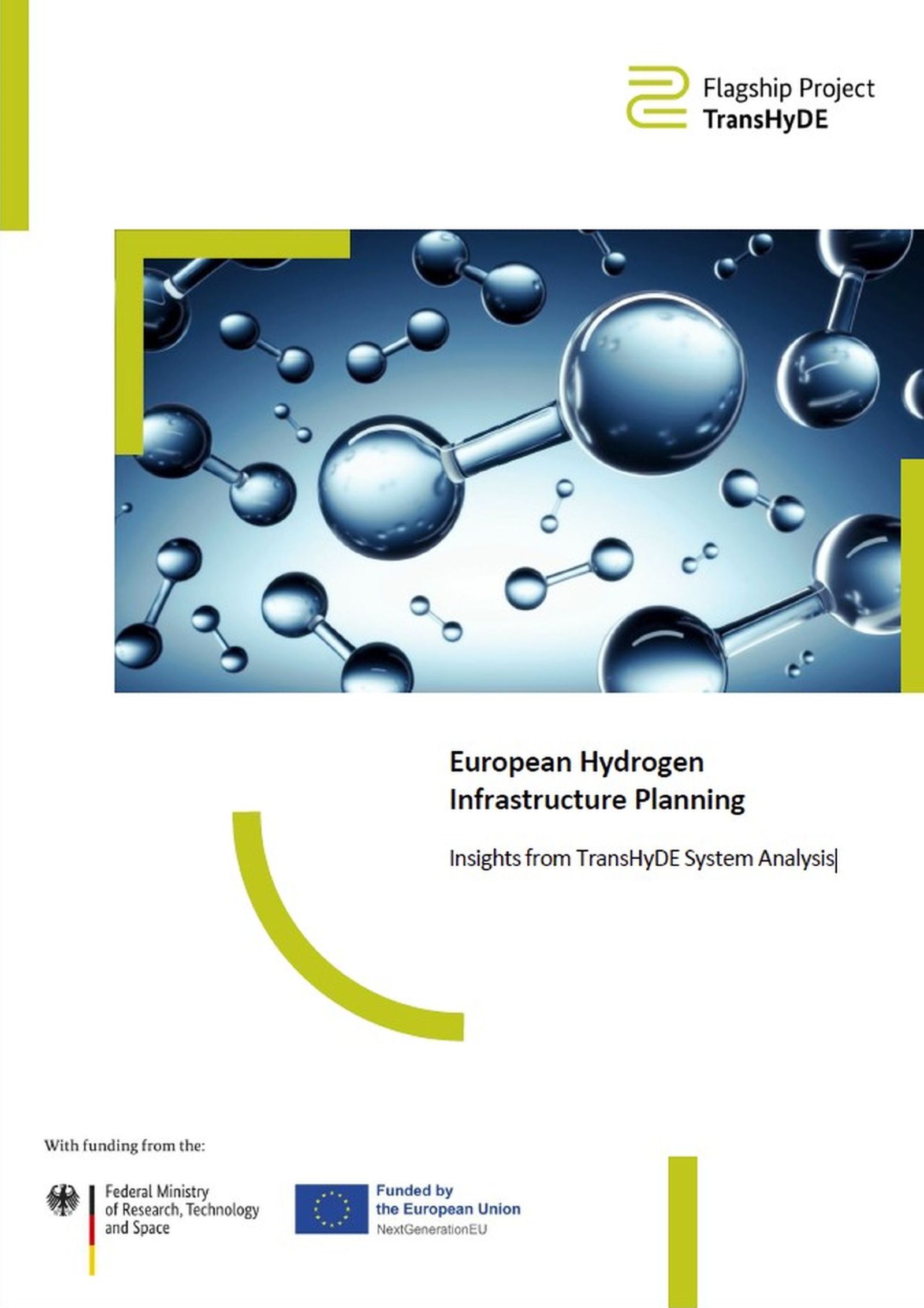
Hydrogen Infrastructure
White paper on latest European Hydrogen Infrastructure Planning
To the paper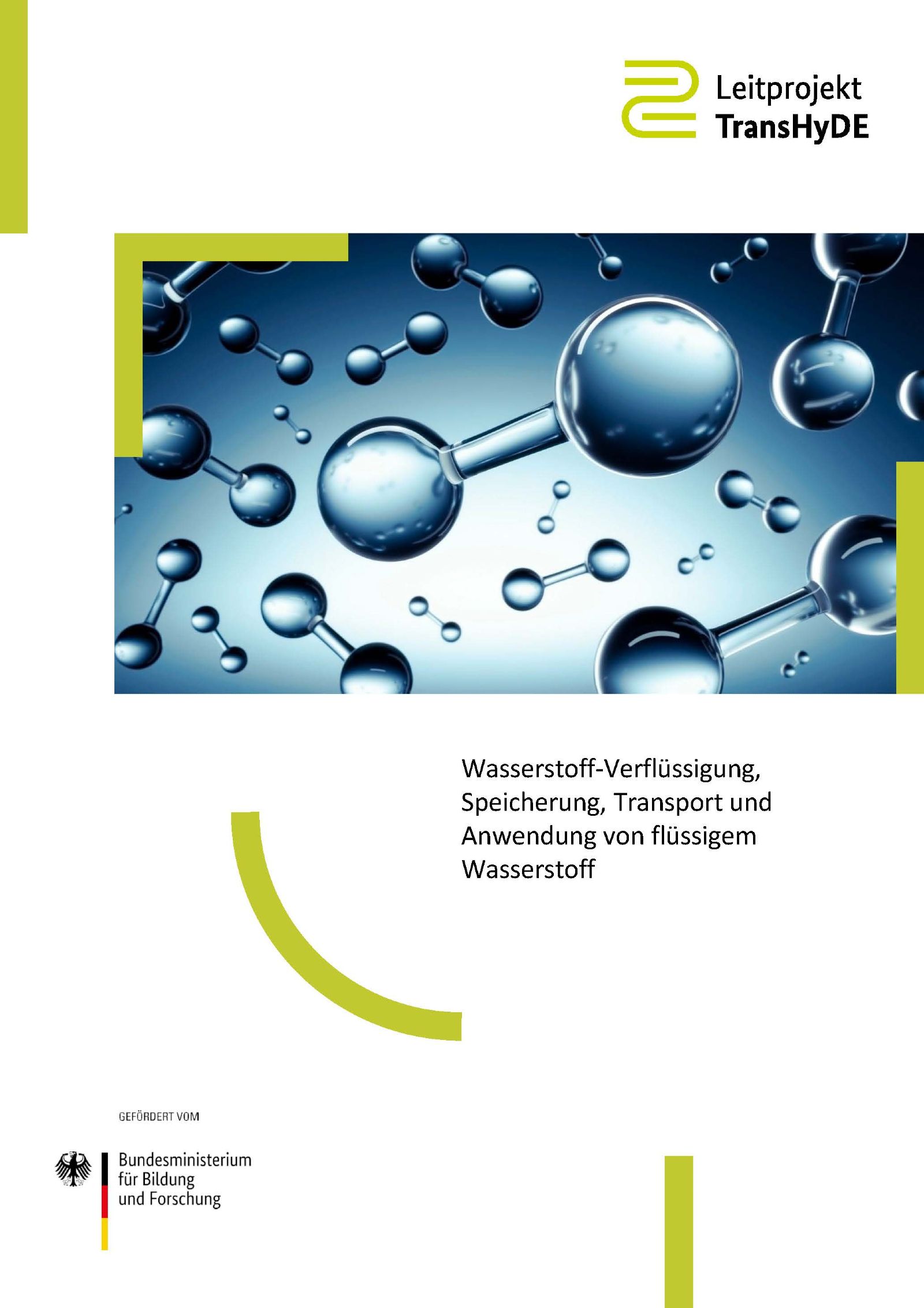
Liquid hydrogen
White paper on hydrogen liquefaction, storage, transport and application of liquid hydrogen
To the paper


